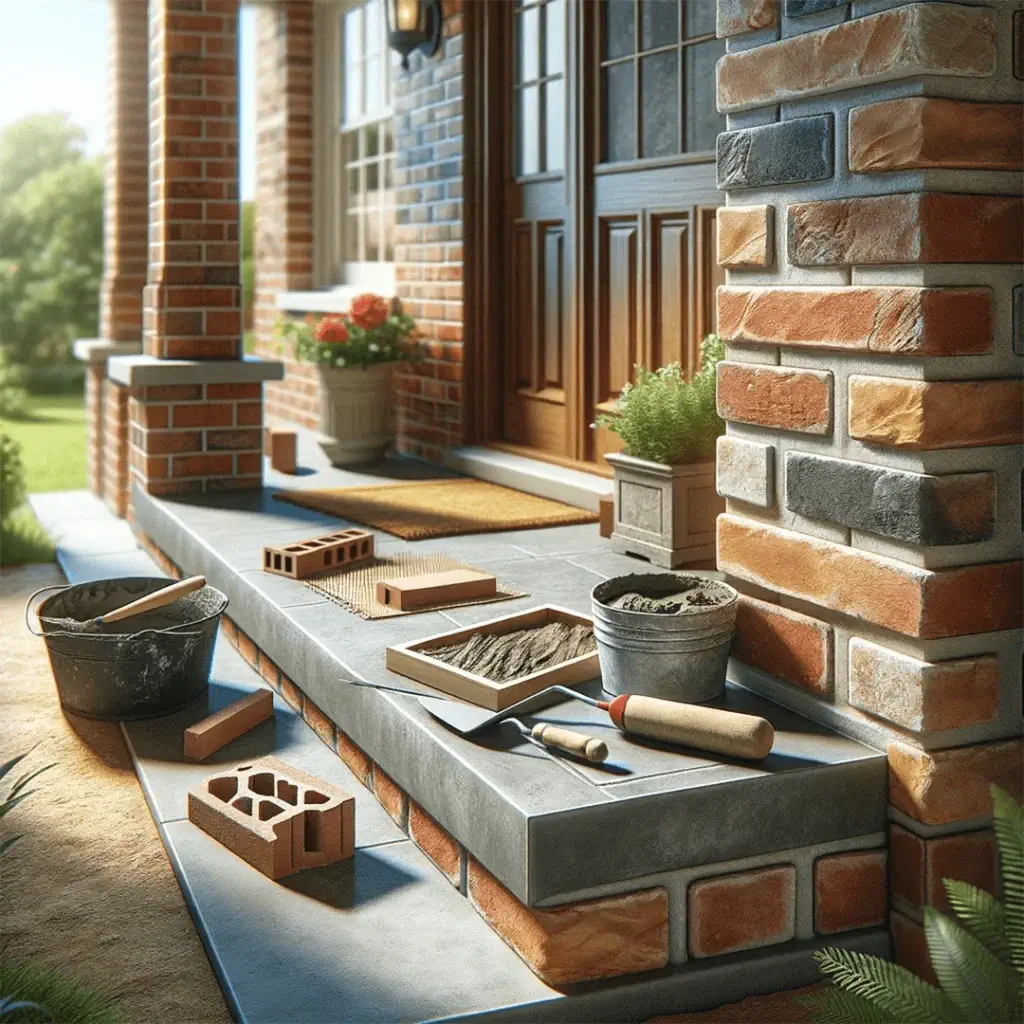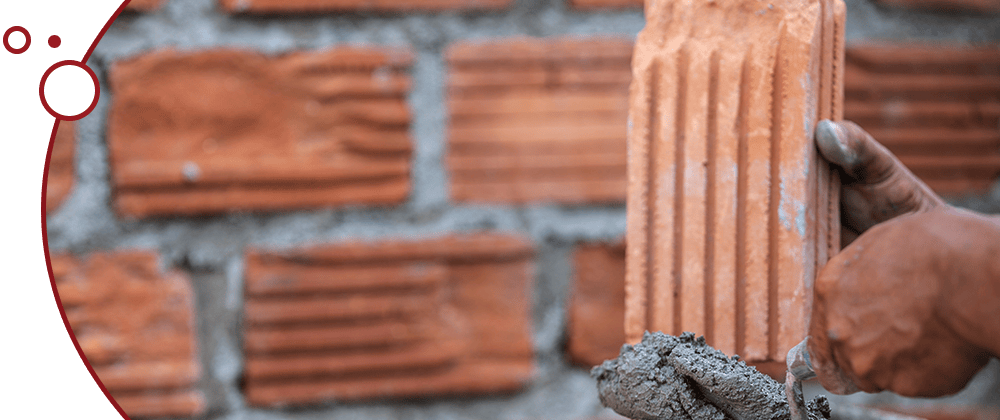
Brick porch repair is a crucial aspect of home maintenance, ensuring both aesthetic appeal and structural integrity. This comprehensive guide delves into the importance of regular upkeep, the identification of common issues, and detailed steps for effective repair and maintenance. Whether you’re a DIY enthusiast or considering professional help, understanding the nuances of repairing and maintaining a brick porch can save significant time and cost, while preserving the charm and safety of your home.
Table of Contents
Understanding Brick Porch Repair
The Importance of Regular Maintenance
Why Upkeep Matters
Regular maintenance of your brick porch is not merely about aesthetics; it’s a vital step in preserving your home’s overall integrity. The porch is often the first impression your house makes, and keeping it in top condition maintains its appeal and value. Regular upkeep involves inspecting bricks and mortar joints for signs of wear and tear. By addressing these issues promptly, you prevent minor problems, such as small cracks or a bit of crumbling mortar, from escalating into major structural concerns that are costly and challenging to fix.
Preventing Major Damage
Routine checks and maintenance are key to the longevity of your brick porch. They allow you to catch and fix problems like small cracks or slight mortar erosion before they worsen. This proactive approach is far more cost-effective in the long run. Ignoring these issues can lead to extensive and expensive repairs. For instance, water can seep through cracks and erode the foundation, leading to serious structural damage. Therefore, the cost of regular maintenance is minimal compared to the potential expenses of major repair work.
Identifying Common Issues
Cracked Bricks
Cracks in bricks can arise due to various reasons, including weather conditions, the settling of the house, or poor construction techniques. While they might seem minor, they can lead to aesthetic issues and potentially weaken the structural integrity of your porch. Regular inspections help in identifying such problems early.
Mortar Deterioration
Mortar is the bonding agent that holds bricks together, and its deterioration can compromise the stability of your porch. Weather, time, and physical stress can cause the mortar to deteriorate. It’s crucial to repair eroded mortar joints to prevent bricks from becoming loose, which can lead to larger structural problems.
Loose Railings
A loose railing is more than just a cosmetic issue; it poses a significant safety hazard, especially on elevated porches. Regular checks should include ensuring that railings are securely attached and stable.
Preparing for Brick Porch Repair

Tools and Materials You’ll Need
List of Necessary Items
For basic brick porch repairs, you’ll need a hammer, chisel, trowel, mortar mix, replacement bricks, safety goggles, and gloves. It’s important to use the right tools to ensure the repair work is done efficiently and safely.
Choosing Quality Materials
When selecting materials for repair, it’s crucial to match the new bricks and mortar with your existing porch in terms of color, type, and strength. This ensures a seamless repair that maintains the original look of your porch.
Safety Measures
Protective Gear
Always wear safety goggles and sturdy gloves to protect yourself from sharp objects and debris. If you’re working on an elevated porch, use a safety harness for added protection.
Safe Work Practices
Secure the work area to prevent accidents, especially if your porch is elevated. This includes removing any obstacles that might cause tripping and ensuring the area is well-lit. If you’re using any electrical tools, make sure they are properly insulated to prevent electrical hazards.
Step-by-Step Repair Process
Assessing the Damage
How to Inspect Your Porch
Begin by conducting a thorough inspection of your porch. Look for visible signs of damage such as cracks in the bricks, loose or missing bricks, eroded mortar, and unstable railings. Pay special attention to the corners and edges of the porch, as these areas are often the first to show signs of wear and tear.
Determining Repair Scope
Once you’ve identified the damaged areas, assess whether the damage is superficial or if it affects the structural integrity of the porch. Superficial damage might be something you can handle yourself, while more significant issues may require professional intervention.
Removing Damaged Bricks
Safe Removal Techniques
To remove damaged bricks, use a chisel and hammer to carefully chisel out the mortar around the brick. Take care not to damage the surrounding bricks. Once the mortar is removed, gently pry the brick out.
Preparing the Area for New Bricks
After removing the damaged bricks, clean out the cavity to remove any old mortar and debris. This ensures a solid base for the new bricks and helps the new mortar adhere properly.
Repairing Mortar Joints
Mixing Mortar
Follow the manufacturer’s instructions to mix the mortar to the right consistency. The mortar should be firm enough to hold its shape but pliable enough to spread easily.
Proper Application Methods
Apply the mortar evenly to the joints, using a trowel. Make sure to fill the joints completely and smooth out the mortar for a clean finish.
Replacing Bricks
Selecting Matching Bricks
Choose new bricks that match the size, color, and texture of your existing bricks as closely as possible. This ensures that the repair blends seamlessly with the rest of your porch.
Installation Process
Carefully position the new bricks into place and secure them with the mortar. Press down firmly to ensure they are properly seated and aligned with the surrounding bricks.
Finishing Touches
Cleaning the Repaired Area
Once the repair work is done, clean the area to remove any excess mortar and debris. This not only gives your porch a neat appearance but also prevents any residual material from causing further damage.
Sealing for Longevity
Apply a sealant to the repaired area to protect against weather and moisture damage. This is particularly important in climates with extreme weather conditions, as it helps extend the lifespan of your repairs.
Maintenance Tips Post-Repair
Regular Cleaning and Inspection
Schedule and Techniques
To maintain your repaired porch, schedule biannual inspections – preferably in the spring and fall. Regular cleaning is also essential to remove dirt and debris that can accumulate and cause damage over time.
Spotting Early Signs of Damage
Be vigilant for early signs of damage, such as hairline cracks, loose mortar, or discoloration. Catching these signs early can prevent them from developing into more significant problems.
Weatherproofing
Importance in Various Climates
In climates with extreme temperatures, moisture, and other weather-related conditions, weatherproofing your porch is essential. It helps protect the brick and mortar from the elements, reducing the likelihood of damage.
Suitable Weatherproofing Methods
Applying a waterproof sealant is an effective way to weatherproof your porch. Additionally, ensure proper drainage around the porch to prevent water accumulation, which can lead to moisture damage over time.
Cost Considerations and DIY vs. Professional Help
Budgeting for Repair
Estimated Costs
The cost of repairing a brick porch can vary based on the extent of damage, the materials needed, and whether you do it yourself or hire a professional. Minor repairs might only require a few hundred dollars in materials, whereas more extensive damage could cost several thousand.
Saving Money Tips
For those on a budget, consider DIY for simple repairs, which can significantly reduce costs. Buying materials in bulk and shopping around for the best prices can also help save money. Additionally, regular maintenance can prevent expensive repairs in the long run.
When to Call a Professional
Complex Repairs
For complex or extensive damage, or if the structural integrity of the porch is compromised, it’s advisable to seek professional help. Professionals have the skills, experience, and tools to handle complex issues safely and effectively.
Benefits of Expert Assistance
Hiring a professional can ensure that repairs are done correctly and safely, potentially saving you money on future repairs. Professionals can also provide warranties on their work, giving you peace of mind. Moreover, they can spot and address issues that you might overlook.
Conclusion
In conclusion, brick porch repair is an essential aspect of home maintenance that preserves the beauty and integrity of your property. Whether you opt for a DIY approach for minor repairs or seek professional help for more significant issues, understanding the repair process and maintaining your porch regularly will ensure its longevity and safety. Remember, the cost of regular maintenance and minor repairs is a worthwhile investment compared to the potential expense and hassle of extensive damage repair. By following these guidelines, homeowners can effectively maintain their brick porches, ensuring they remain a welcoming and sturdy feature of their homes for years to come.
FAQs on Brick Porch Repair
Q: How often should I inspect my brick porch for potential issues?
A: It’s advisable to inspect your brick porch at least twice a year, typically in the spring and fall. These inspections can help you identify issues like cracks or mortar deterioration early, allowing for timely repairs before they escalate into larger problems.
Q: Can I handle brick porch repairs myself, or should I hire a professional?
A: Simple repairs, such as replacing a few bricks or re-pointing mortar, can often be managed as DIY projects. However, for extensive damage, complex structural issues, or if you’re unsure about the process, it’s safer and more effective to hire a professional.
Q: What are the signs that my brick porch needs immediate repair?
A: If you notice significant cracks, loose or shifting bricks, extensive mortar erosion, or any signs of structural instability, you need to undertake immediate repairs. These issues can pose safety hazards and might indicate underlying problems that require urgent attention.
Q: How do I choose the right materials for repairing my brick porch?
A: Select materials that match your existing porch in terms of brick type, color, and mortar composition. This ensures that repairs blend seamlessly with the original structure and maintain the porch’s integrity and appearance.
Q: What maintenance steps can I take to prolong the life of my brick porch?
A: Regular cleaning, timely repairs of minor issues, and applying a sealant can significantly prolong the life of your brick porch. Also, ensure proper drainage around the porch to prevent water accumulation, which can lead to brick and mortar deterioration.


